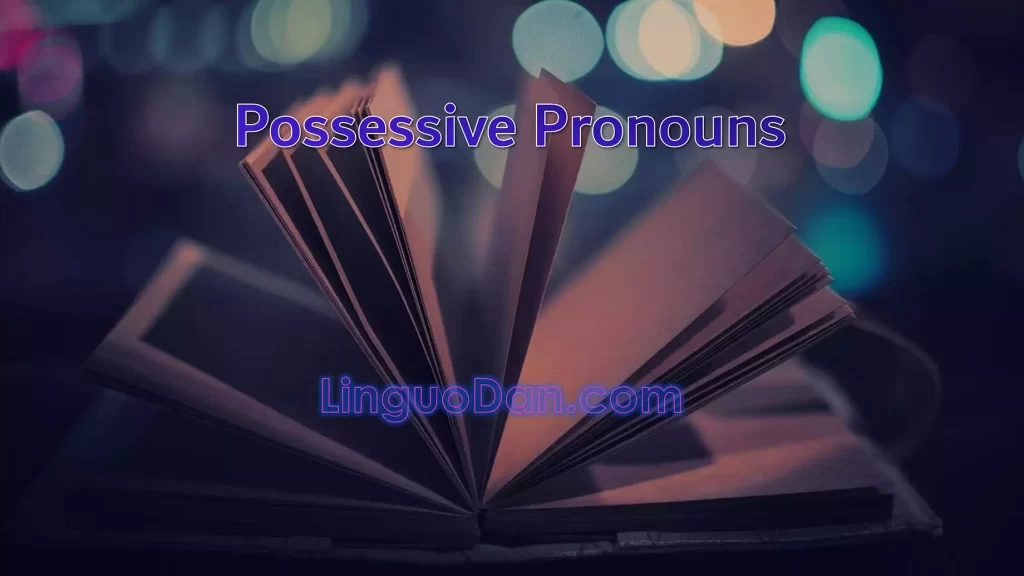Possessive Pronouns in English

Possessive Pronouns
Possessive Pronouns indicate possession of an object. They are used when we want to say that this object is mine, yours, his, and so on. Let’s consider the main forms of possessive pronouns. Possessive pronouns have two forms, namely the dependent (or conjoint) form and the independent (or absolute)
Forms of possessive pronouns
| dependent | independent |
| my | mine |
| his | his |
| her | hers |
| its | — |
| our | ours |
| your | yours |
| their | theirs |
Possessive pronouns have the same distinctions of person, number, and gender as personal pronouns.
Conjoint forms of possessive pronouns
| 1st person | 2nd person | 3rd person | |
| SINGULAR | my | your | his, her, its |
| PLURAL | our | your | their |
Absolute forms of possessive pronouns
| 1st person | 2nd person | 3rd person | |
| SINGULAR | mine | yours | his, hers |
| plural | ours | yours | theirs |
Use of possessive pronouns
The conjoint form is used when the possessive pronoun comes before the noun it modifies. The conjoint form of the possessive pronoun is used as an attribute.
- In his turn old Jolyon looked back at his son
The absolute form is used when the possessive pronoun does not modify any noun. The absolute form of the possessive pronoun may be used as subject, predicative or object. The group ‘preposition + absolute form’ may be used as an attribute. Possessive pronouns are often used before the names of the parts of the body, clothing, things belonging to a person, etc.
- Young Jolyon rose and held out his hand to help his father up
- The girl dropped her handkerchief and he picked it up
Possessive pronouns express the meaning of belonging (possession), etc.:
- my book
- her work
The dependent form of possessive pronouns is used before marked nouns. The independent form does not need a noun:
- Are these your books?
- Are these yours?
- She is a friend of mine
- I took some books of yours
Usually possessive pronouns are used with the names of body parts or clothes
- Не washed his hands
- Mary cleaned her teeth’
- I took off my shoes
Characteristics of possessive pronouns
Its is a possessive pronoun used before a noun:
- The dog got its food
- It’s is a shortened form of it is or it has:
- It’s time to go
- It’s got wings
It should be noted that in phrases with a preposition, the definite article the is used instead of a pronoun
| Subject | Predicate verb | Object | Phrases with a preposition |
| The ball | hit | me | on the shoulder |
| The son | kissed | the mother | on the cheek |
Depending on the person, the appropriate possessive pronoun is used in this sense:
- I read my book
- Не reads his book
Examples of possessive pronouns
| General form | Forms | Example |
| I |
my/mine |
|
| НЕ | his/his |
|
| SHE | her/hers |
|
| IT | ITS/ITS |
|
| WE | OUR/OURS |
|
| YOU | YOUR/YOURS |
|
| THEY | THEIR/THEIRS |
|